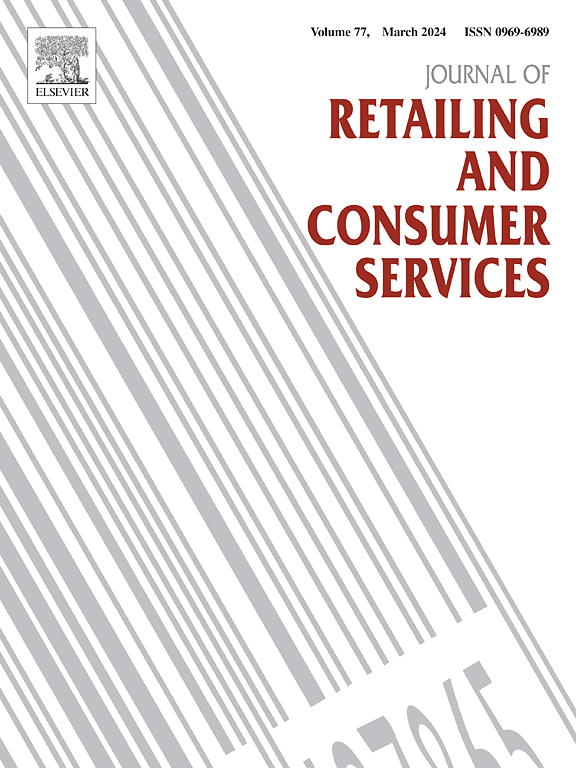消费者对奢侈品非可食用代币(NFTs)视觉展示的偏好:感知真实性的作用
IF 11
1区 管理学
Q1 BUSINESS
Journal of Retailing and Consumer Services
Pub Date : 2024-10-22
DOI:10.1016/j.jretconser.2024.104131
引用次数: 0
摘要
不可赝品代币(NFTs)越来越多地被用于保护奢侈品免遭假冒。尽管NFTs的应用日益广泛,但对品牌应如何传播NFTs的使用--一个消费者难以理解的新颖而复杂的概念--以最大限度地发挥其效益的研究却十分有限。本研究旨在通过强调可视化的易用性对于有效沟通的关键性,来审视这一空白。研究 1A 表明,在鉴定奢侈品时,消费者更喜欢可视化的 NFT,而不是非可视化的 NFT。研究 1B 进一步表明,消费者对可视化 NFT 更为信任,并愿意为使用了可视化 NFT 的奢侈品支付更高的价格。研究 2 表明,与难以可视化的 NFT 相比,消费者对具有易于可视化的 NFT 的奢侈品持更有利的态度,而感知到的真实性是这一效应的中介。最后,研究 3 表明,易于可视化的 NFT 暗示对奢侈品的积极影响比对非奢侈品更为显著。因此,本研究提出了使用 NFT 的有效沟通策略,并为旨在最大化使用 NFT 好处的奢侈品牌提供了管理启示。本文章由计算机程序翻译,如有差异,请以英文原文为准。
Consumer preferences for the visual presentation of non-fungible tokens (NFTs) of luxury products: The role of perceived authenticity
Non-fungible tokens (NFTs) are increasingly used to safeguard luxury products from counterfeits. Despite their increasing adoption, limited research has investigated how brands should communicate the use of NFTs—a novel and complex concept for consumers to comprehend—to maximize their benefits. This research aims to examine this gap by highlighting that the ease of visualization is critical for effective communication. Study 1A demonstrated that consumers prefer a visualized NFT to a non-visualized one for authenticating a luxury product. Study 1B further demonstrated that consumers place greater trust in a visualized NFT and are willing to pay higher prices for luxury products that utilize it. Study 2 demonstrated that consumers have more favorable attitudes toward a luxury product that features an easy-to-visualize NFT than those with a difficult-to-visualize NFT and that perceived authenticity mediates this effect. Finally, Study 3 demonstrated that the positive impacts of easy-to-visualize NFT cues were more significant for luxury than non-luxury products. Subsequently, this study suggests an effective communication strategy for NFT use and provides managerial implications for luxury brands aiming to maximize the benefits of using NFTs.
求助全文
通过发布文献求助,成功后即可免费获取论文全文。
去求助
来源期刊
CiteScore
20.40
自引率
14.40%
发文量
340
审稿时长
20 days
期刊介绍:
The Journal of Retailing and Consumer Services is a prominent publication that serves as a platform for international and interdisciplinary research and discussions in the constantly evolving fields of retailing and services studies. With a specific emphasis on consumer behavior and policy and managerial decisions, the journal aims to foster contributions from academics encompassing diverse disciplines. The primary areas covered by the journal are:
Retailing and the sale of goods
The provision of consumer services, including transportation, tourism, and leisure.

 求助内容:
求助内容: 应助结果提醒方式:
应助结果提醒方式:


